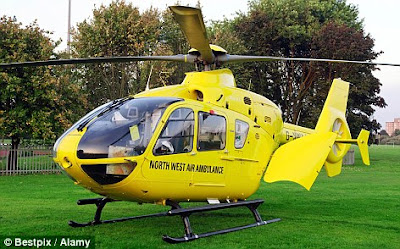
–
On this episode of the First Few Moments podcast Kyle David Bates, Steve Murphy, Patrick Lickiss, and I discuss Patrick’s article about trauma triage criteria – Are Prehospital Trauma Triage Criteria Effective?
–
There are a lot of interesting things about this study, but Table 3 shows that there is some ability to improve the accuracy of triage criteria by combining criteria. This should be a no brainer, but here are some data to support this. 2.8% + 4.7% + 8.0% = 50%. That is a tremendous improvement over the 15.5% that they add up to individually.
This only reinforces the uselessness of just MOI (Mechanism Of Injury) to identify critical trauma patients.

Click on images to make them larger.
48.5% (N = 50) of these patients had inadequate pre-hospital data. – This refers to the patients missed by the triage criteria. However, it is difficult to make any claim about how the criteria would apply to these patients. Without the information, we do not know.
Is missing data a good predictor of failure to follow criteria, failure to assess patients, or a global failure on the part of EMS.
–
Table 4 shows that a lot of criteria are difficult to assess, because there are more missing data than there are positive data for any of the individual criteria. The pulse oximetry data are missing almost everything, so it is impossible to draw any valid conclusions from that. 54.5% would seem like a great predictive criterion, but we only have data for 3.9% of the patients. This is not a representative sample. The law of small numbers applies.
In small sample sizes, strong, but purely coincidental associations are expected.
The number of oxygen saturation observations was limited due to the fact that currently only MICA paramedics have the equipment required to perform this recording. Out of 17,645 patients, only 1109 (6.3%) patients had a recording for oxygen saturation. In time this equipment will become available to more of the ambulance service’s fleet.[1]
–
To be continued in Part II.
Also see these other sources of information.
2011 Guidelines for Field Triage of Injured Patients Poster from CDC
–
Footnotes:
–
[1] Differentiation of confirmed major trauma patients and potential major trauma patients using pre-hospital trauma triage criteria.
Cox S, Smith K, Currell A, Harriss L, Barger B, Cameron P.
Injury. 2011 Sep;42(9):889-95. Epub 2010 Apr 28.
PMID: 20430387 [PubMed – indexed for MEDLINE]
–
Guidelines for field triage of injured patients. Recommendations of the National Expert Panel on Field Triage.
Sasser SM, Hunt RC, Sullivent EE, Wald MM, Mitchko J, Jurkovich GJ, Henry MC, Salomone JP, Wang SC, Galli RL, Cooper A, Brown LH, Sattin RW; National Expert Panel on Field Triage, Centers for Disease Control and Prevention (CDC).
MMWR Recomm Rep. 2009 Jan 23;58(RR-1):1-35. Erratum in: MMWR Recomm Rep. 2009 Feb 27;58(7):172.
PMID: 19165138 [PubMed – indexed for MEDLINE]
Free Full Text from MMWR with link to PDF Download
–
Sasser SM, Hunt RC, Sullivent EE, Wald MM, Mitchko J, Jurkovich GJ, Henry MC, Salomone JP, Wang SC, Galli RL, Cooper A, Brown LH, Sattin RW, & National Expert Panel on Field Triage, Centers for Disease Control and Prevention (CDC) (2009). Guidelines for field triage of injured patients. Recommendations of the National Expert Panel on Field Triage. MMWR. Recommendations and reports : Morbidity and mortality weekly report. Recommendations and reports / Centers for Disease Control, 58 (RR-1), 1-35 PMID: 19165138
–
Cox, S., Smith, K., Currell, A., Harriss, L., Barger, B., & Cameron, P. (2011). Differentiation of confirmed major trauma patients and potential major trauma patients using pre-hospital trauma triage criteria Injury, 42 (9), 889-895 DOI: 10.1016/j.injury.2010.03.035
.









Subscribe to RogueMedic.com